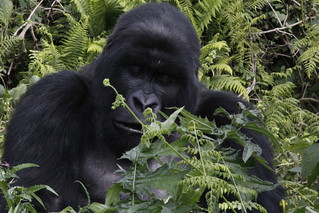The great migration as popularly known is the movement of millions of wildebeest between Serengeti national park and nearby conservation areas like Ngorongoro conservation area of Tanzania and masai mara national reserve of kanya. The wildebeest will move north from Serengeti at the beginning of the year and return toward the end of the year.
You will be forgiven if you are one of the many who think that the migration is a one-off event that happen around late July and early September when the wildebeest cross the mara river as that is the highlight of the year long wildebeest migration.
The wildebeest migration is all year round with different activities happening at different destination at different times of the year. The migration course starts with calving season that happens at the beginning of year between January and march where thousands of newborn wildebeest are produced in Ndutu conservation area in southern Serengeti.
when does the great migration start?
At the beginning of the rainy season around April, the wildebeest together with their newborns will move in central Serengeti in seronera plains where they will stay for the period of wet season and their mating season will find the here toward the end of the rainy season.
As the Africa’s longest dry season kick in, the wildebeest continue with their adventure towards north passed kogatende plain, in the due process they will face their fast handle of crossing Grumeti river before eventually reaching their hardest huddle of crossing the Mara river as they are crossing the masai Mara national reserve of Kenya
Mara river crossing draws thousands of revelers all over the world as they come to witness the biggest animal migration all over the world attempting to cross over a crocodile-feasted river mara while fighting the waves of running water with an attempt to find their new and greener pasture on the Kenya side
What factors that influence wildebeest migration?
The migration is majorly influenced by the rainfall season as the major of the movement of wildebeest is such for the fresh and green pasture that they can feast on. It is believed that the wildebeest can sense the rain 50 kilometers away from where they are. These herbivorous animals are interested in feasting on the green grass that grow with the help of the rain, hence influencing their movements.
Wildebeest do not move alone; they are usually move in the company of zebras. Behind them are the hungry big cats including lions, leopards and cheetahs who feast on the wildebeest and other herbivores like antelopes that move with the wildebeest. This make the experience of witnessing wildebeest migration at any time of the year such an exciting event as you are likely to encounter the predator prey interactions on top of encountering millions of wildlife in their natural habitats.
Why it is important to know the wildebeest migration season?
It is very important to get to know the right stage at which wildebeest are as this will determine where they will be and also greatly affect your overall experience. For instance, there is some time of the year where you will not find animals in Ndutu conservation area as they will have migrated to other area as great migration depends on the season.
When do wildebeest cross Mara River?
If your interest is to witness this great experience of wildebeest crossing the mara river, I will advice you plan your adventure around mid July. The river crossing last for several week which will give you a chance to witness over 1.5 million of wildebeest, together with over a million zebras and other animals attempting to cross crocodile infested Mara river. Many of the animals will not survive the harsh reality of Nile crocodiles and others will be washed away by the running water of River Mara. The crossing to Kenya side of masai Mara will continue until early September.
During October, the wildebeest start to return to Serengeti. However, this is less spectacular, and the wildebeest return in slow and dispersed motion. This makes the period between mid July to early September the best time to go for the great wildebeest migration on an African vacation safari in case your interest is in witness the river crossing experience.
However, you can catchup with the migration in different destination through out the year and experience the great experience of the Serengeti national park and its uniqueness.
popular safari tours for the wildebeest migration vacation safaris
[/vc_column_text][/vc_column][/vc_row]
10 Day Wildebeest and gorillas vacation safaris

Embark on a captivating journey through the heart of East Africa as we invite you to explore the enchanting landscapes, vibrant cultures, and rich biodiversity of Rwanda and Tanzania. This meticulously crafted 10-day itinerary promises an immersive experience, seamlessly blending the awe-inspiring encounters with gorillas
| TRIP DETAILS |
| REQUEST INFO |
6 Day Wildebeest and gorilla trekking safari

Book 6 Days Ngorongoro crater visit and Rwanda gorilla trekking to explore Tanzania & Rwanda on an Africa Safari experience tailored by Active African vacation the leading Safari operator in Uganda. The 6 Days Tanzania Rwanda Safari takes you to the great Ngorongoro crater reserve for an amazing wildlife experience.
| TRIP DETAILS |
| REQUEST INFO |
7 Day Rwanda-Tanzania vacation safari

Depending on the degree of lodging, the time of year, and the particular parks and activities included a 7-day safari in Rwanda and Tanzania might have somewhat different costs. Along with activities to do in every park, below is a sample schedule including expected expenses for middle-class, budget, and luxury alternatives.
| TRIP DETAILS |
| REQUEST INFO |

